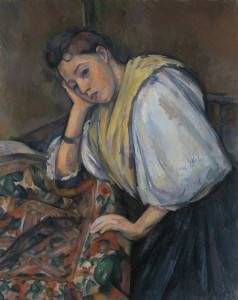
Why We Need More Abortion Stories in Our Fiction
I read a lot of novels with adult women protagonists. But I hardly ever come across abortion in my reading, even when there’s an unintended pregnancy. Or if a character has an abortion, she’s frightened, ashamed, and suffers devastating consequences.
But one in three women in the US will have an abortion in her lifetime. Abortion is one of the most common medical procedures. And it’s connected to many human experiences novelists like to explore, like sex, love, families, friendship, parenting, education, careers, female agency, you name it. So why is it so rare in fiction?
One reason for the paucity of abortion narratives in fiction might be genre related. In romance, for example, for a heroine to get an abortion she must either (a) have a sexual partner who is not the hero, or (b) abort a fetus she conceived with the hero. Both violate genre norms. What publishers call “women’s fiction” celebrates women’s empowerment with happy or at least bittersweet endings. Maybe abortion is perceived as a “no way out” situation and ultimately, a personal failure. In YA, female protagonists, and many readers, are teens. Maybe abortion in that genre is considered too dark.
But none of this reflects the reality of women’s lives. Over half of all abortions in the US are obtained by women who are married or cohabitating. For many women, abortion is an active choice, not a forced one. And far from being opposed to mothering and family, abortion is for many women the best way, in the face of an unexpected pregnancy, to manage family responsibilities. The majority (75%) of abortions are obtained by women in the age range predominantly represented in YA, New Adult and romance (teens through 20s), all three of which often include romantic and/or sexual themes and unintended pregnancies. And finally, while abortions can be difficult or “dark” for some women, they are relatively easy choices with positive consequences for others.
The biggest barrier to writing about abortion is the demonization of the procedure and the women who choose it in the current American political climate. Even though the majority of Americans support the continued legal status of abortion, stigmatization — the perceived cultural understanding that a social practice is unacceptable — remains. Stigmatization leads to the near absence of abortion narratives in literature, the portrayal of abortion as fraught and dangerous, and the characterization of women who choose abortion as selfish or immature. Stigmatization explains why women only selectively disclose their abortion experiences and why 40% of Americans claim to not know anyone who has had an abortion. And the more women don’t talk about it, the easier it is to believe abortion is a tragic circumstance of “those women” on the margins of society. Look around. Do you have a mother, sisters, a female partner, female friends? Then you probably know someone who has had an abortion.
Maybe writers or publishers don’t think a female protagonist who has an abortion will seem “likable.” But we can and should ask why having an abortion makes a literary character less sympathetic, and, more basically, why female protagonists should always be likable.
Even for readers who feel abortion is a grievous moral wrong, who just can’t care about a character who chooses abortion, it’s worth asking why we find it enjoyable and valuable to experience stories that explore, empathize with, or even glorify murderers (Dexter Morgan, Hannibal Lecter), rapists (male protagonists in dark romance, Alex of A Clockwork Orange), thieves (Eugenides in Megan Whalen Turner’s Queen’s Thief series, Becky Sharp), war criminals, and more. Why should female characters who have abortions be so much harder to depict with subtlety or to read with understanding?
My wish is not just for more stories, but also that abortion narratives in fiction don’t combine to paint a misleading portrait of what is actually one of the most common and safest medical interventions in the United States (over 16 million per year; 0.7 deaths per 100,000). The vast majority of women (95%) do not regret their abortions, and their dominant emotional reaction is relief, in both the short and long term. If fiction stimulates empathy, maybe more and varied portrayals could facilitate dialogue around a topic that can be polarizing. Or shed light on the many values “pro life” and “pro choice” readers share. Fictional narratives could supplement existing efforts to encourage women to share their stories and provide emotional support to readers who have had an abortion, especially important since the negative psychological effects of abortion, when they are present, are exacerbated by social stigma.
For millions of women, abortion is not a statistic or a political platitude. Although public discourse around abortion tends to stick to abstractions, there is no one “abortion experience.” Women’s sexualities, pregnancies, and terminations are unique. Every woman has her own complex network of relationships, her own ambitions and fears, her own challenges and triumphs. An abortion is one thread, however thick or thin, long or short, in the tapestry of her life.
Sometimes I wonder if writers feel they must either write an “issue book” about abortion or not include it at all. If so, that’s is too bad, because for most women, an abortion, even when it is a significant and painful decision, isn’t a long shadow that colors the rest of her life. I’m not asking for educational, or pro-choice, or feminist, or even “realistic” abortion narratives, although all of those are worth reading. I’d just like abortion to be portrayed as the very common, yet very personal experience it is.
I’ll end here with a shout out to some recent works that fit the bill:
- ’89 Walls by Katie Pierson (2015)
- Not Funny Ha-Ha: A Handbook for Something Hard by Leah Hayes (2015)
- Dirty Work by Gabriel Weston (2014)
- The Recovery Room by Ann Ormsby (2014)
- Gabi, a Girl in Pieces by Isabel Quintero (2014)
- The Girlfriend by Abigail Barnette (2013)
- NW by Zadie Smith (2012)
- When She Woke by Hillary Jordan (2012)












